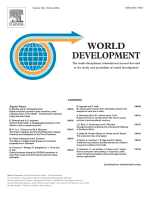
Lo más reciente
This paper examines the evolution of women’s participation in the labor market from 1960 to 2018, shedding light on the complex factors that influence their labor opportunities. The study emphasizes the significance of the historical context in understanding these factors. This research uncovers nuanced insights using a two-step methodology involving principal component analysis and Time-Varying Effect Modeling (TVEM). The results indicate that the transition from high to low fertility rates significantly influenced female labor participation until the mid-1980s. Educational advancements, economic growth, and changing marital dynamics also played a role in shaping evolving patterns. From 1980 to 1995, factors such as diminishing fertility, declining infant mortality, and varying economic conditions influenced women’s labor involvement. From 1995 to 2010, higher education emerged as a key driver, accompanied by shifting societal norms, and from 2010 to 2018, there were positive contributions from fertility rates, minimum wage, and male labor participation. This study underscores the intricate relationship between education, demographics, social norms, and economics in shaping women’s labor force participation, providing valuable insights for gender-inclusive policies and promoting women’s economic empowerment.



 Ana María Tribín-Uribee,
Ana María Tribín-Uribee, 